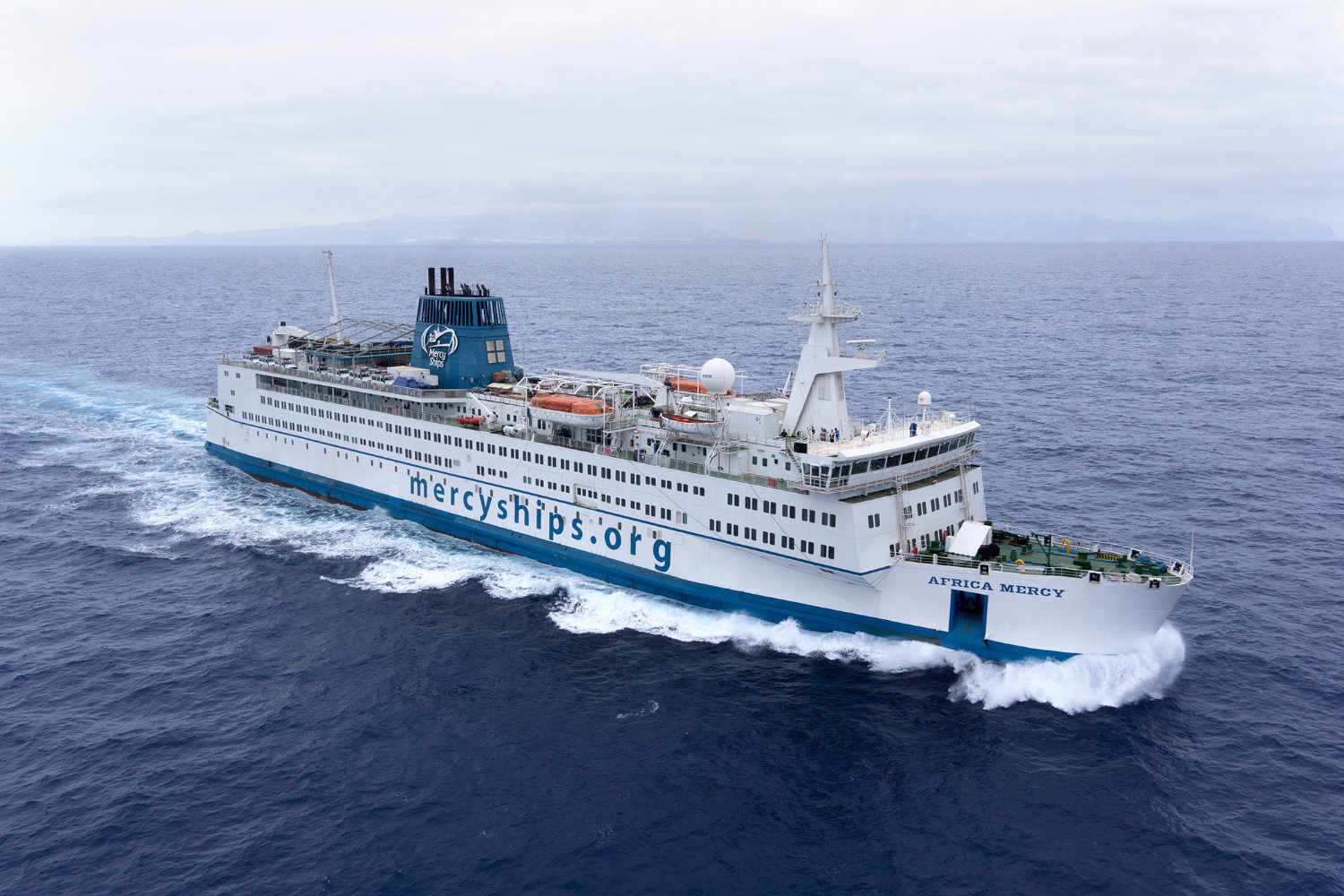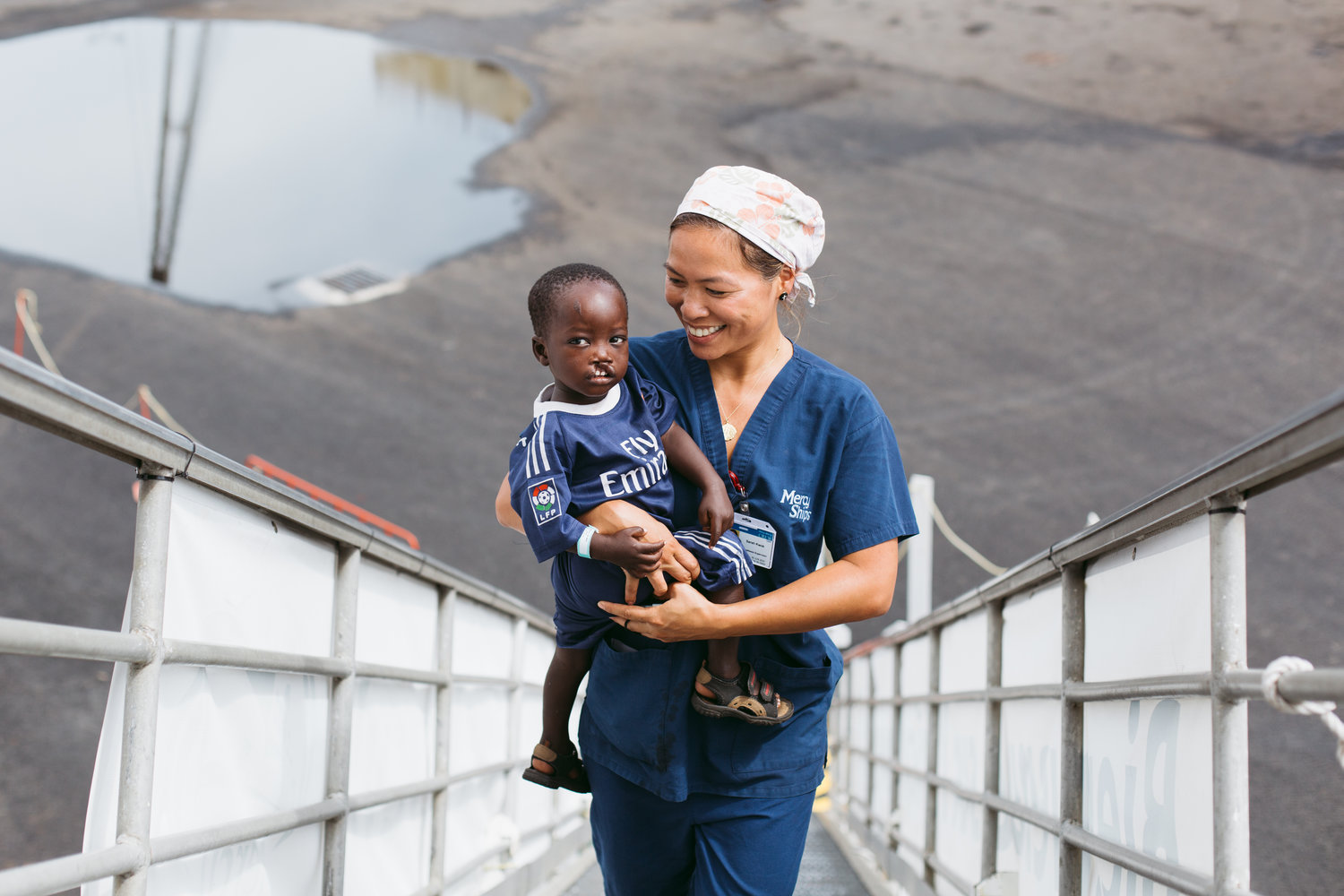Ships of mercy take healing around the world
woodctystringer@gmail.com
The enormous undertaking of running the hospital ship “Africa Mercy” is such a complex challenge that it is difficult to fully appreciate. However when talking with anyone associated with Mercy Ships, the challenges just seem dwarfed by the life-changing goodness which the organization creates.
This item is available in full to subscribers.
Attention subscribers
To continue reading, you will need to either log in to your subscriber account, or purchase a new subscription.
If you are a current print subscriber, you can set up a free website account and connect your subscription to it by clicking here.
If you are a digital subscriber with an active, online-only subscription then you already have an account here. Just reset your password if you've not yet logged in to your account on this new site.
Otherwise, click here to view your options for subscribing.
Please log in to continue |
Ships of mercy take healing around the world
There are charities which provide a means for unfortunate people to help themselves. There are others that dig wells to tap fresh water or build schools or offer counseling and protection.
All of these initiatives are praiseworthy. However, there is only one charity which runs a large hospital ship (soon again two hospital ships) and provides palliative care – treatment of the whole being. That charity is headquartered just west of Lindale in Garden Valley. It is Mercy Ships.
The enormous undertaking of running the hospital ship “Africa Mercy” is such a complex challenge that it is difficult to fully appreciate. However when talking with anyone associated with Mercy Ships, the challenges just seem dwarfed by the life-changing goodness which the organization creates.
As they have since 1987, Mercy Ships surgically corrects curable ailments among the populations of some of the world’s poorest nations. The ailments have been so long removed from the mainstream of the United States that they may be unfamiliar to many.
Chief among the conditions treated by the volunteers of Mercy Ships are non-cancerous tumors, cleft palate, fistula, cataracts, congenital dislocation of the knees and a range of other deformities.
In areas of the world where masses of people are without adequate health care, having a deforming condition can be a life-long sentence of discrimination, societal shunning or worse. It is not uncommon for afflicted people to be accused of sorcery or of being cursed.
Corrective surgery which restores the body’s functionality or repairs a deformity is not a simple matter of physical health, it is often a rebirth for individuals who had been ostracized in their communities.
When Mercy Ships spokesperson Laura Rebouche speaks of “miracles that happen every day,” it is exactly these life-changing acts to which she is referring. To better understand the organization which brings such care to the unfortunate, step back to a day in 1978.
In that year, in a small government office in Italy, Mercy Ships founder Don Stephens signed the initial purchase documents for the Motor Vessel “Victoria,” a laid-up passenger liner.
That simple act was only one scene in a saga which had its beginnings in Stephen’s humble and hard-working western upbringing. The saga then winds through several life-changing events in Stephens’ life. An idea grew within him – to build a fleet of hospital ships to serve the world’s poor – and it never let him rest.
As Stephens describes in his book “Ships of Mercy,” “The idea of mercy, the idea of a ship, the idea of launching a new way to bring modern medical care to all the world’s citizens – it was suddenly all I could think about, talk about, dream about.”
Stephens did more than dream.
The “Victoria,” then bearing the name “Anastasis” (the Greek word for “resurrection”) would become the first of six hospital ships flying under the Mercy Ships banner.
Over the past 33 years, the dream evolved into the most remarkable humanitarian achievement of modern times.
Sir John Major, former British Prime Minister, penned in a foreword to Stephens’ story, “Because of Mercy Ships. People see – who would be blind; walk – who would be crippled; live – who would die.”
Stories of the successes enjoyed, the lives restored, the bodies mended, and the overflowing love of human beings to one another could fill volumes. That endeavor continues today.
The running of a large ship, most especially a ship perpetually forward-deployed overseas, is daunting. In addition to the multitude of maintenance actions required to keep a ship fully operable, large quantities of lubricants, fuel, electricity and water must be supplied. Whether those items are supplied from the shore or produced onboard, the challenges are equally tasking.
The ship and her crew must also be certified for seagoing operation. Qualifications must be met, periodic safety drills conducted and ship systems regularly inspected. Maintaining a ship overseas is a 24/7 endeavor.
Of note, practically 100% of the material, parts and consumables are shipped to the “Africa Mercy” from Garden Valley. The shipping bays off of TX 110 are hopping. Supplies are routed through the Port of Houston.
The medical practitioners and support personnel presently aboard “Africa Mercy” number 500. That will give an idea of just how large of an undertaking this is. They are all volunteers. In fact, they are more than volunteers, as those who serve in “Africa Mercy” pay in advance for their own travel, meals and lodging.
Logically, most, but not all, volunteers have some sponsoring organization that covers the cost. It is important to the charity that all volunteers understand the basis of their service and why Mercy Ships exists at all.
Rebouche described the exhaustive orientation process.
“The mandatory six-week orientation done at Garden Valley starts with instruction on the Bible and how the charity is founded on the 2,000-year-old model of Jesus of Nazareth,” she explained. Orientation also covers shipboard life, the larger organization, the ship itself and the mechanics of medical processing as well as social considerations.
Volunteers serve for varied amounts of time. The different duty lengths are tied to the actual position being filled. Decades of experience in administering shipboard volunteers has determined the optimal duration for each billet onboard.
Most needs are predictable, but as Rebouche highlighted, “There is always a place for a volunteer.”
She offered the example of a carpenter who volunteered and ended up making prosthetic shoes during his time in the ship.
Since inception, a number of ships have served under the Mercy Ships flag. The “Anastasis” was joined by the “Good Samaritan,” the “Caribbean Mercy,” the “Island Mercy” and the “Pacific Ruby.” These smaller ships, while providing excellent service, were phased out as the need for greater capacity grew and grew. Today only the “Africa Mercy” is active.
Soon, the Mercy Ships fleet will once again have two ships in operation. The newest hospital ship, to be christened the “Global Mercy,” will not be a refitted cruise ship. The “Global Mercy,” presently nearing completion at the Xingang Shipyards in Tianjin, China is a purpose-built hospital ship.
In an almost unheard of circumstance, it is already paid for. In short, the world has funded this ship of mercy, through donations to Mercy Ships.
The “Global Mercy” is expected to conduct sea trials in February and enter full service by January 2022. At 37,000 tons, she will be more than double the size of the “Africa Mercy.”
Among the many unique features of the ship will be an exact replica of an adjacent shipboard operating room. It will be in this mimic facility where medical trainees from host nations will be able to train by observing and mimicking the surgeons on a real time basis. It is part of the commitment of Mercy Ships to leave lasting changes in the nations they visit.
The best example of this lasting change has been the creation of Hope Centers ashore in the host nations. These rehabilitation centers are established to serve those patients who have received care on the ship. It is the intent that each Hope Center will continue to flourish after the ship departs.
The process by which Mercy Ships agrees to provide medical care in a specific nation is now well-matured. The initial queries may begin at one of the 14 national offices maintained worldwide or with the assistance of one of the internationally-recognized board members. Thereafter a formal protocol is signed between the national government and Mercy Ships.
A medical mission alongside a pier in a coastal city usually lasts six to ten months. How many lives are directly transformed in that time? Thousands directly and untold numbers indirectly.
The work of Mercy Ships was not immune to the global pandemic this past year. The “Africa Mercy” was forced to interrupt a mission in the West African nation of Senegal. It is anticipated that she will shortly return to finish her commitment. A further visit to Liberia is also on the horizon.
And what of the reward for the caregivers? Stephens aptly captured it in this passage from his book, “We have now sailed to places with names rarely heard in the developed world…few of them are on our mental maps of the world, but each is forever on the heart maps of Mercy Ships crews.”
Born of a young man’s idea of service, Mercy Ships has grown to be one of the most effective and humanitarian charities in the world. The 2,000-year old model of Jesus serves just as well today as it did when He walked the earth.









